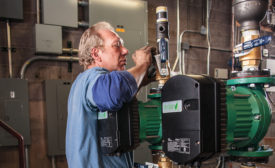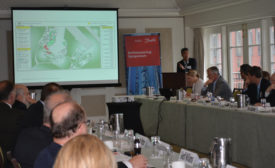Articles by Jen Anesi
Contractors must stay aware of new energy-efficiency standards and requirements
Read More
Energy Bill a ‘Mixed Bag’ for HVAC
Organizations express support, concern over parts of the comprehensive energy legislation
Read More
Diagnosing and Solving Blower Motor Problems
Blower motor troubleshooting tips from the trenches
Read More
New Motor Products Propel the Market Forward
Manufacturers share their latest and greatest HVAC motor-related offerings
Read More
Motor Technology Drives Circulator Pump Innovation
Variable-speed technology and controls improve pump efficiency, ease of installation
Read More
DOE Releases Proposed Regional Standards Enforcement Rule
Industry has until Jan. 4 to comment on the enforcement proposed rule
Read More
EnVisioneering Symposium Focuses on Integrated Buildings
Danfoss event highlights future of building integration strategies, efficiency, and technology
Read More
DOE Releases Regional Standards Enforcement Proposed Rule
Industry will have 45 days from date of publication to comment on enforcement NOPR
Read More
The Contractor’s Role in Workforce Development
Innovative contractors take steps to recruit new talent and fill the training gap
Read More
HVAC Industry Invests in Low-GWP Refrigerants
HVACR industry spent more than $255 million in 2015 to research, develop low-GWP refrigerants
Read More
Copyright ©2024. All Rights Reserved BNP Media.
Design, CMS, Hosting & Web Development :: ePublishing








